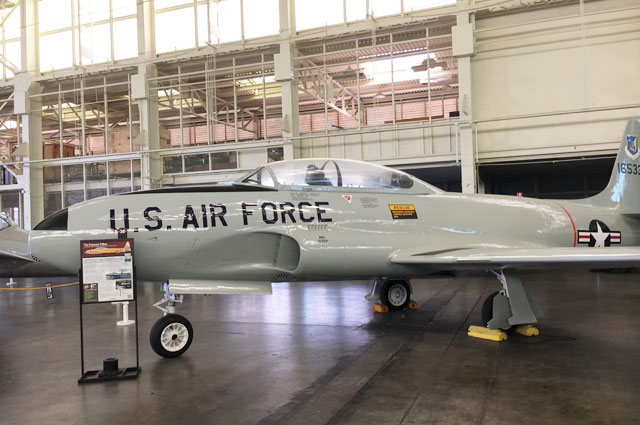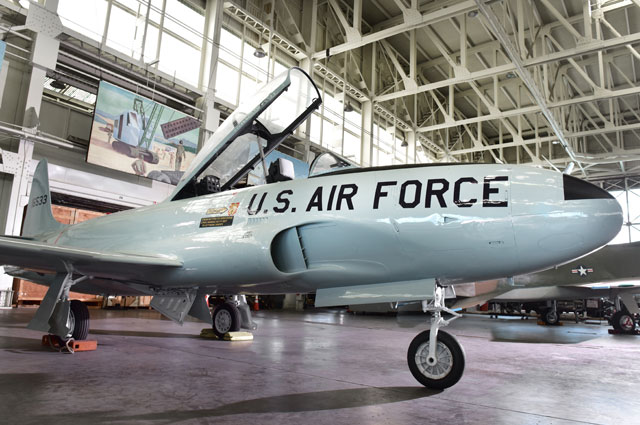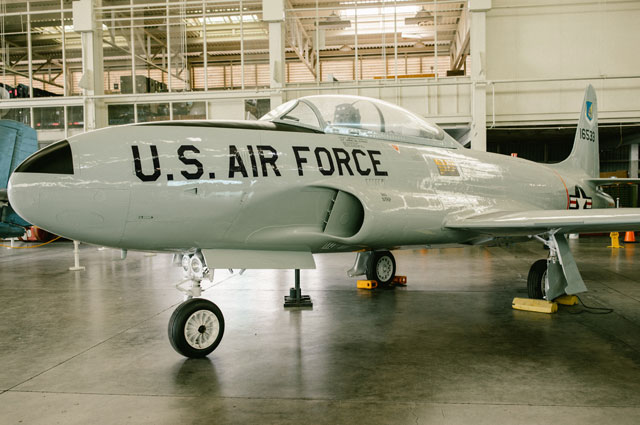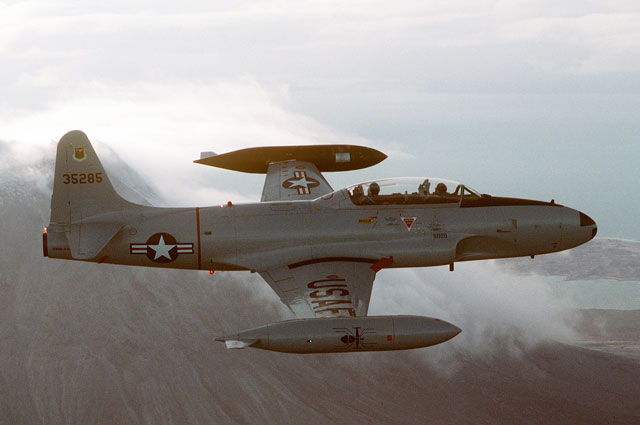
Lockheed T-33 T-Bird/Shooting Star (Trainer)
Snapshot
- Nickname:
- T-Bird
- Number Built:
- 6,557
- Make:
- Lockheed
- Mission:
- Trainer
- Location:
- ハンガー79
Background
As many military pilots found out after WWII, it’s not easy to transition from flying a piston-powered aircraft to a jet. The high number of crashes led Lockheed to modify the sleek P-80 into the first jet trainer, the T-33 Shooting Star (or T-Bird). The design was a good one—despite its age, the T-33 remains in service worldwide today.
The bubble canopy provided good visibility to the student in front and instructor in back. The extended nose allowed for larger fuel tanks and a greater range than the P-80C. A straight wing gave good performance at low altitudes and excellent maneuverability.
A total of 6,557 Shooting Stars were produced from 1948 to 1959. The USN version (designated TV-2, redesignated T-33B in 1962) entered service in 1949. A carrier version, in the 1950s, was called the T2V-1/T-1A SeaStar. The T-33 was also the prototype for the F-94 Starfire fighter. Canadian T-33s were called C-133 Silver Stars.
The USAF NT-33A flew until the 80s, even though phasing out began in the 1960s when T-37 Tweet and T-38 Talon aircraft came on line. This also happened in the Navy with the T-2 Buckeye and TA-4 Skyhawk II, but the T-Birds continued to serve as utility aircraft, trainers, drone leaders, and targets for missiles.
The T-33 is one of the world’s best-known aircraft, having flown for more than 20 nations.
Specs
- Contractor
- Lockheed
- Deployment Date
- First flight on March 22, 1948
- Span
- 38 feet, 10.5 inches
- Length
- 37 feet, 9 inches
- Height
- 11 feet, 8 inches
- Weight
- 15,100 lbs
- Max. Speed
- 331.5 MPH
- Service Ceiling
- 48,000 feet
- Range
- 1,275 miles
- Crew
- 2








